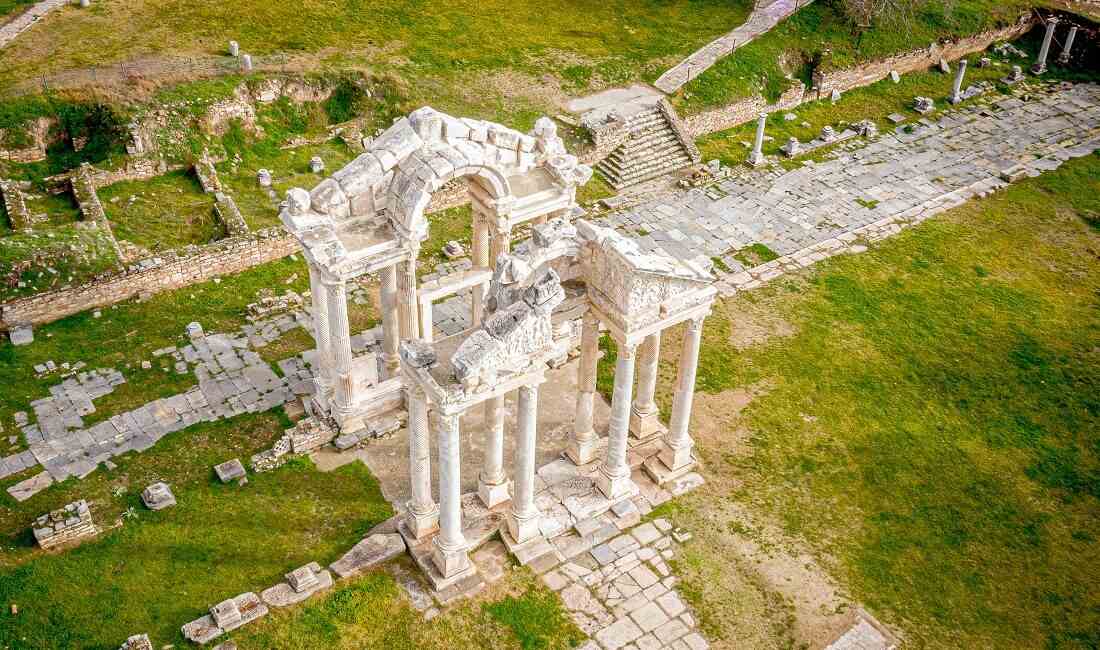
Aphrodisias was an ancient city in Caria, Anatolia, modern-day Turkey. It was located on a fertile plain about 60 kilometers (37 miles) east of the Aegean Sea. In the seventh century B.C., colonists from Rhodes founded the city. It was a significant center of trade and commerce in the ancient world. It was also an important cultural and religious hub. The city gained national attention due to the presence of a temple honoring Aphrodite, the Greek goddess of love and beauty.
Aphrodisias was a thriving city for centuries. However, it declined in importance in the late Roman period. The town was eventually abandoned in the 7th century A.D. Today, Aphrodisias is a UNESCO World Heritage Site. The city’s ruins are well-preserved and offer a fascinating glimpse into its long and rich history.
1. Early History of Aphrodisias
In the seventh century B.C., colonists from Rhodes founded Aphrodisias. The city was on a fertile plain about 60 kilometers (37 miles) east of the Aegean Sea. The city was initially named Ninoe after the nearby river. However, it was renamed Aphrodisias in the 4th century B.C. after Aphrodite, the Greek goddess of love and beauty.
Aphrodisias was a thriving city for centuries. It was a significant center of trade, commerce, religion, and culture. The town was famous for its sanctuary of Aphrodite, one of the most important pilgrimage destinations in the Roman Empire. The monastery of Aphrodite was built in the 2nd century B.C. It was decorated with several marble statues of Aphrodite. The city also had other temples, including a temple to the Roman emperor Hadrian.
Aphrodisias was also a significant center of learning. The city had a famous school of philosophy founded in the 2nd century A.D. by the philosopher Hermias. The school attracted students from all over the Roman Empire. The city was also home to many famous sculptors, including Aphrodisianus, Polykles, and Bryaxis. These sculptors were known for their realistic and idealized sculptures. Their work was in high demand throughout the Roman Empire. Their statues were used to decorate temples, public buildings, and private homes.
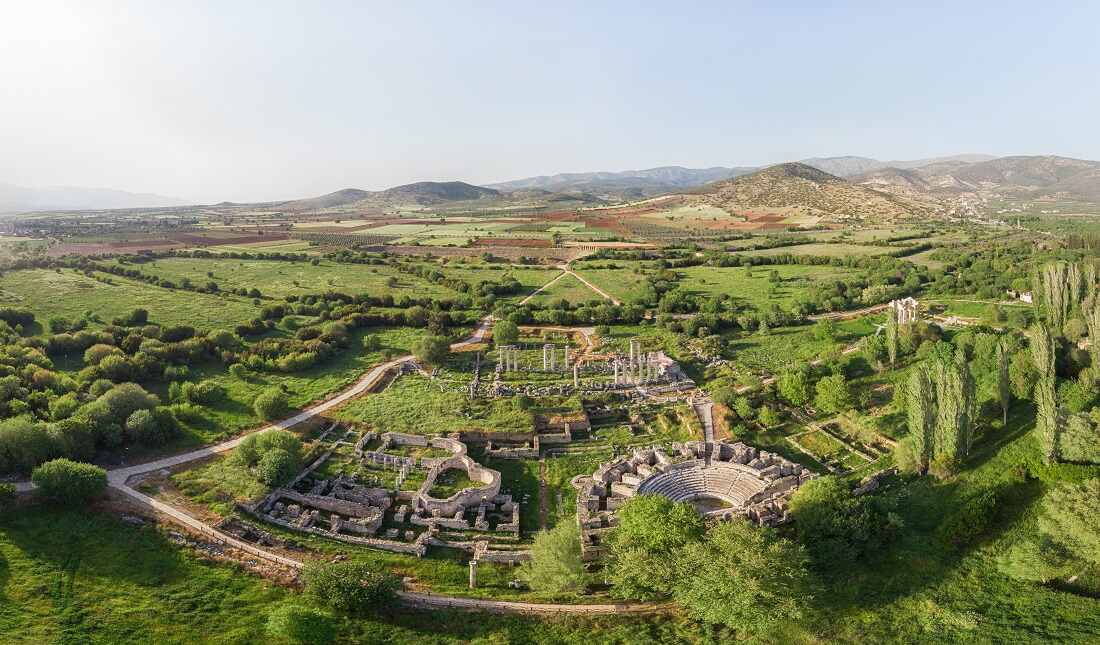
2. The School of Philosophy at Aphrodisias
The School of Philosophy at Aphrodisias was founded in the 2nd century A.D. by the philosopher Hermias. Hermias was a student of the Platonist philosopher Plotinus, and he brought the teachings of Plotinus to Aphrodisias.
The school at Aphrodisias was a significant center of learning for centuries. It attracted students from all over the Roman Empire, including the future emperor Julian the Apostate. The school was known for its teaching of Platonism. Still, it taught several other subjects, including mathematics, astronomy, and rhetoric.
The school at Aphrodisias was a significant center of Platonic scholarship. The most famous scholar of the school was Alexander of Aphrodisias, who wrote commentaries on a wide range of Platonic texts. Alexander’s writings significantly impacted society, and scholars are still studying them.
The school at Aphrodisias declined in importance in the late 4th century A.D. Several things contributed to this, most notably the spread of Christianity and the fall of the Roman Empire. The school eventually closed in the 6th century A.D. Despite its short existence, the school at Aphrodisias contributed significantly to the development of Platonic philosophy. The school’s scholars produced many essential works, and they helped to preserve and transmit the teachings of Plato.
3. The Sculptors of Aphrodisias
Aphrodisias was a significant center of sculpture in the Roman Empire. The city was home to several famous sculptors, including Aphrodisianus, Polykles, and Bryaxis. These sculptors were known for their realistic and idealized sculptures. The city’s marble quarries provided the sculptors with a wealth of materials. The city’s rich history and culture also impacted the sculptors.
The sculptors of Aphrodisias produced a wide range of sculptures, including statues of gods and goddesses, portraits of Roman emperors and other dignitaries, and decorative reliefs. Their work was in high demand throughout the Roman Empire. Their sculptures were used to decorate temples, public buildings, and private homes.
4. Roman Occupation of Aphrodisias
Aphrodisias was a thriving city for centuries before it came under Roman rule in the 1st century B.C. The city’s wealth and culture impressed the Romans, who made Aphrodisias a significant hub of their empire.
The Romans rebuilt Aphrodisias on a grand scale. They built new temples, theaters, baths, and other public buildings. They also improved the city’s infrastructure, including its roads, water supply, and sewer system. Aphrodisias became a popular destination for Roman emperors and other dignitaries. The town was known for its beauty, cultural attractions, and excellent schools.
Aphrodisias reached its peak of prosperity in the 2nd and 3rd centuries A.D. However, the city began to decline in the 4th century A.D. as the Roman Empire began to decline. The city was eventually abandoned in the 7th century A.D. However, the town’s ruins are still well-preserved and offer a fascinating glimpse into its long and rich history.
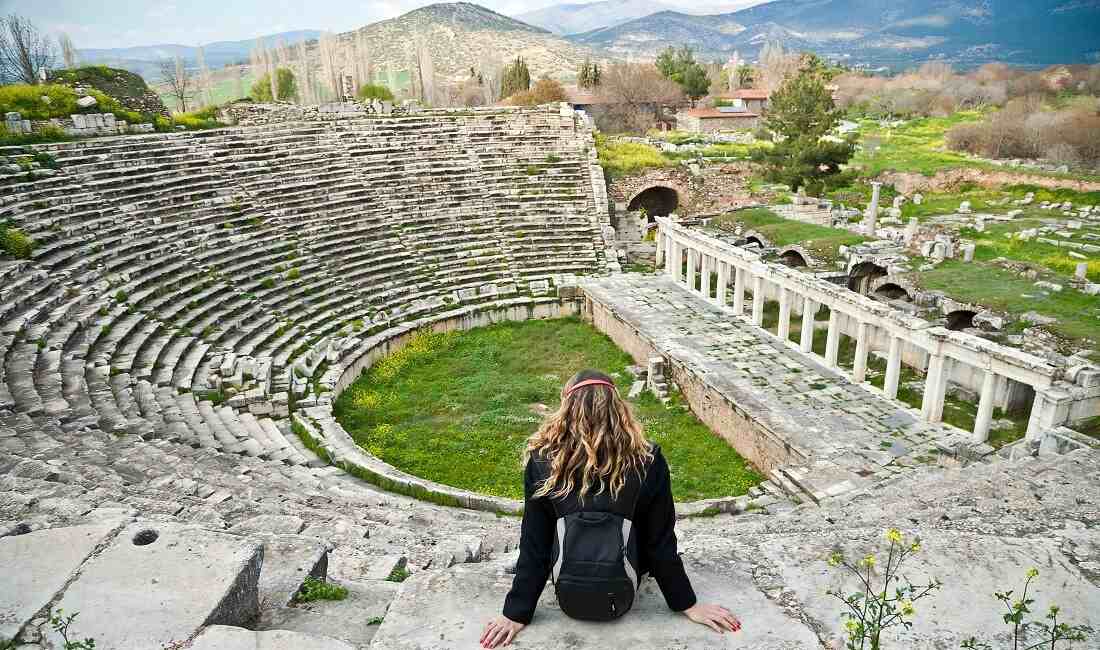
Here are some of the most notable Roman-era buildings and structures in Aphrodisias:
The Temple of Aphrodite: The Temple of Aphrodite was the most important religious building in Aphrodisias. It was built in the 2nd century A.D. and was dedicated to the Greek goddess of love and beauty.
The Theater: The theater was constructed in the third century A.D. and had a capacity of 20,000 viewers. It served as a facility for both public performances and political rallies.
The Baths: The Baths were built in the 2nd century A.D. and were used for bathing, socializing, and exercising. They were one of the most famous public buildings in Aphrodisias.
The Agora: The Agora was the main public square in Aphrodisias. It was used for markets, festivals, and other public events.
The Roman occupation of Aphrodisias had a profound impact on the city. The Romans rebuilt the city on a grand scale, making it a major center of their empire. Aphrodisias reached its peak of prosperity in the 2nd and 3rd centuries A.D., but it began to decline in the 4th century A.D. The city was eventually abandoned in the 7th century A.D. However, the city’s ruins are still well-preserved and offer a fascinating glimpse into its long and rich history.
5. Decline of Aphrodisias
Aphrodisias was a thriving city for centuries, but it began to decline in the late Roman period. The town was eventually abandoned in the 7th century A.D. Some factors contributed to the decline of Aphrodisias, including:
The Rise of Christianity: It led to a decline in pagan worship, a significant income source for Aphrodisias. The city’s economy was based on producing and selling marble, which was used to build temples and other religious structures. As pagan worship declined, so did the demand for marble from Aphrodisias.
Economic and Political Instability: The late Roman Empire was a time of significant economic and political instability. This made it difficult for cities like Aphrodisias to thrive. Civil wars, unemployment, and inflation were all problems in the empire. These problems made it difficult for people to afford goods and services, which led to a decline in demand for Aphrodisias’s products.
Barbarian invasions: In the sixth and seventh centuries A.D., barbarian tribes frequently invaded the area around Aphrodisias. These invasions caused widespread damage and disruption, further contributing to the city’s decline. The barbarian invasions destroyed many of Aphrodisias’s buildings and infrastructure and forced many of the city’s inhabitants to flee.
As a result of these factors, Aphrodisias declined in importance and eventually abandoned in the 7th century A.D. The decline of Aphrodisias is a reminder of the fragility of human civilization. Even the most prosperous and influential cities can only adapt to changing circumstances if they can adapt to changing circumstances. However, the city’s ruins are still well-preserved and offer a fascinating glimpse into its long and rich history.
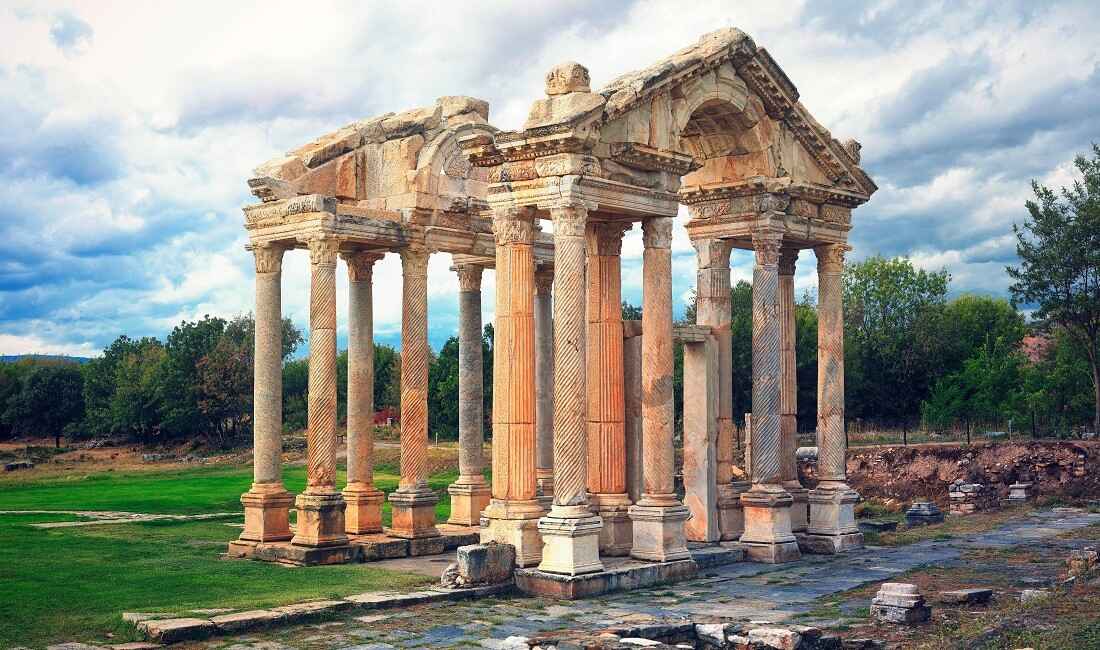
The architectural style of Aphrodisias is a blend of Hellenistic and Roman styles. The city’s buildings are characterized by their use of marble, intricate ornamentation, and large size.
Use of Marble: The city’s buildings were built using white marble from the nearby quarries. This marble was used to create intricate ornamentation and sculptures.
Intricate Ornamentation: The city’s buildings were decorated with elaborate ornamentation, including friezes, columns, and pediments. This ornamentation was often used to depict religious or mythological scenes.
Large Size: The city’s buildings were large in size, reflecting the city’s wealth and importance. The Temple of Aphrodite, for example, was over 100 feet long and 60 feet wide.
The architectural style of Aphrodisias is a unique blend of Hellenistic and Roman styles. The city’s buildings are characterized by their use of marble, intricate ornamentation, and large size. These buildings are a testament to the city’s long and rich history and offer a fascinating glimpse into the Roman world.
1. Famous Structures in Aphrodisias
The Stadium: The Stadium is one of the best-preserved Roman stadiums in the world. It was built in the 2nd century A.D. and could seat up to 30,000 spectators.
The Temple of Aphrodite: The Temple of Aphrodite was the most important religious building in Aphrodisias. It was built in the 2nd century A.D. and was dedicated to the Greek goddess of love and beauty. The temple was destroyed in the 6th century A.D. earthquake, but its ruins are still impressive.
The Theater: The theater was constructed in the third century A.D. and had a capacity of 20,000 viewers. It served as a facility for both public performances and political rallies.
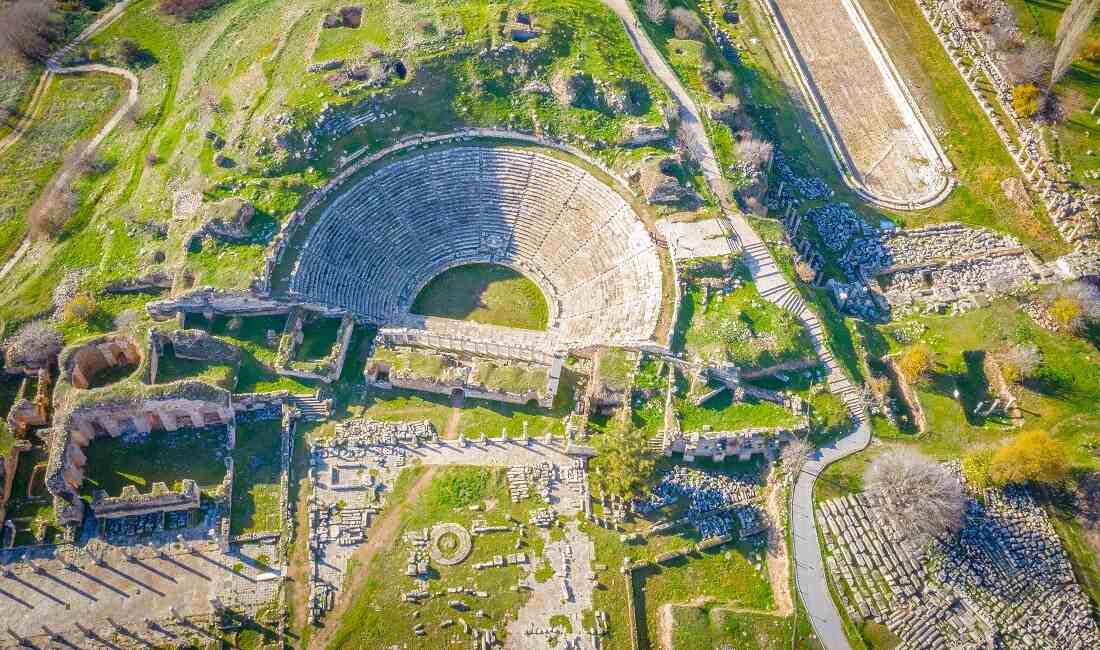
2. Artistic Treasures in Aphrodisias
Sculptures: Aphrodisias is home to an extensive collection of Roman sculptures. These sculptures are characterized by their realism, idealism, and technical skill. Famous city sculptors like Aphrodisianus, Polykles, and Bryaxis produced a large number of the statues.
Mosaics: Aphrodisias is also home to many beautiful mosaics. These mosaics were used to decorate public buildings and private homes’ floors and walls. The mosaics are characterized by their bright colors, intricate designs, and mythological themes.
Inscriptions: Aphrodisias is home to a large number of descriptions. These inscriptions provide information about the city’s history, people, and culture. The illustrations are written in Greek and Latin and carved on stone, marble, and other materials.
The architectural and artistic heritage of Aphrodisias is a testament to the city’s long and rich history. The city’s ruins are a popular tourist destination, offering a fascinating glimpse into the Roman world.
Aphrodisias is an important archaeological site because it gives us a glimpse into a bygone era. The city’s ruins offer us a unique opportunity to learn about the Roman world, its culture, and its people. Aphrodisias is also important because it is home to several unique and beautiful sculptures. These sculptures are a testament to the city’s artistic heritage and its importance as a center of learning and culture.
Aphrodisias’s impact on the world has not yet entirely faded. Many museums worldwide feature sculptures from this city, and visitors pay a visit to see the city’s ruins. It reminds us of the importance of cultural heritage and the need to preserve our past for future generations.
